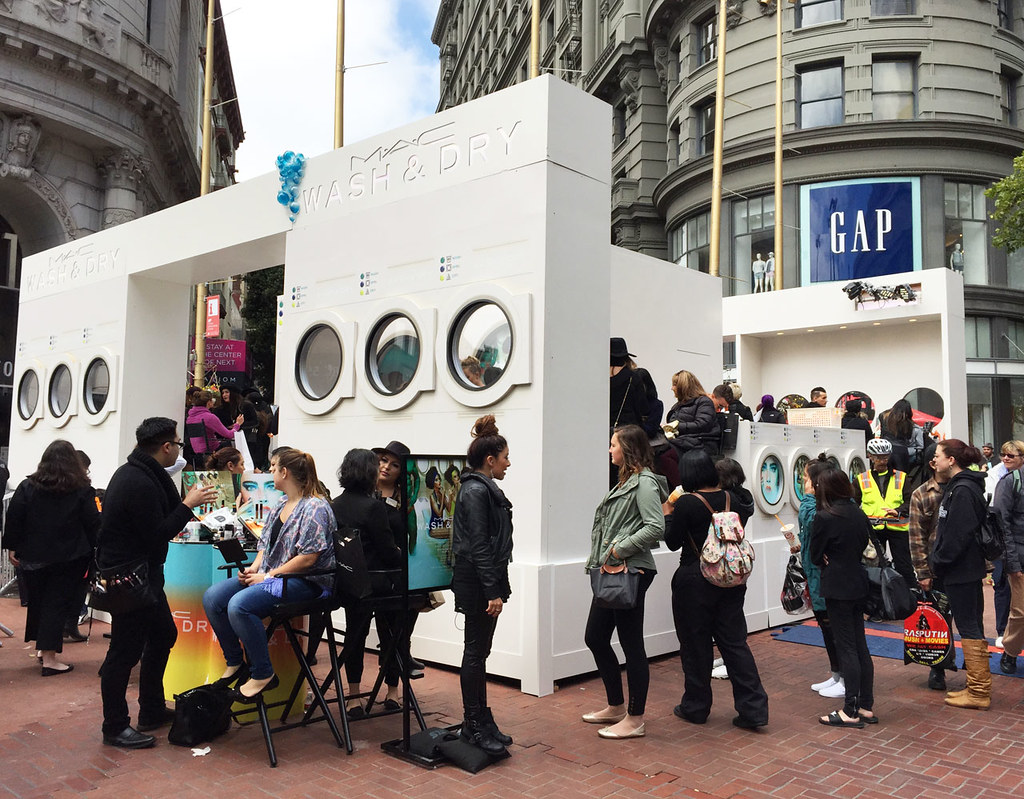Uncovering the Benefits of Experiential Marketing
In this blog post, learn how to improve your business strategically by exploring the advantages of experiential marketing for businesses. Experiential marketing refers to strategies that put customers in the center of a brand’s story and provide them with an interactive, real-life experience that is memorable and engaging. We will discuss how this kind of marketing can help businesses increase brand loyalty, reach more potential customers, and strengthen relationships with existing customers.

What is Experiential Advertising?
Experiential advertising, also known as experiential marketing, is a type of marketing that engages consumers on an emotional level. It uses physical interactions and engaging experiences to allow consumers to interact directly with a company or brand. It allows companies and brands to connect with their target audience in meaningful ways and create lasting memories for the consumer.
An effective experiential advertising strategy will include several different elements such as creating unique experiences, using interactive technologies, offering special promotions and personalizing customer service. Companies should focus on creating relevant experiences that are tailored to their core audience’s wants and needs, along with leveraging digital platforms and content creation tools which can help increase engagement levels among potential buyers.
Examples Of Experiential Campaigns
There are many successful examples of experiential campaigns worldwide, including Nike's Playlists event where they invited customers into stores from diverse backgrounds, DJs playing hip hop tunes while customers tried out the latest sneakers. Amazon’s Visual Search Experience at SXSW booth enabling visitors to take pictures of products on display for more information about them. And McDonald’s McDelivery campaign inviting people out for bike rides around NYC neighborhoods delivering food orders by bicycle.

Experiences have been proven to be powerful motivators for consumer behavior, with studies reporting higher engagement levels among consumers who have engaged in an experience than those who haven't had any experience at all. This means that effective use of experiential events can lead to, not only increasing sales, but also enhance consumer loyalty towards a particular brand or product range by strengthening relationships between them in an engaging way.
It is also important that you track your results through metrics such as website visits after participating in an event; hashtag tracking; purchase conversions utilizing vouchers given away during the events, etc.; overall sentiment analysis using surveys before or after attending events; personal information collected from participating users/attendees through signup forms, etc. You need data-driven insights into what works best so you can adjust your strategy accordingly if needed later down the line when planning future activities related to experiential campaigns.
Advantages of Experiential Marketing for Businesses
This type of campaign typically involves a carefully crafted combination of experiences such as physical activities, tastings, demonstrations and other events designed to stimulate interest and create memorable moments. Through this approach, businesses are able to connect with their target audience in an authentic way by immersing them in the brand’s identity.
When crafting an experiential campaign there are several strategies that should be considered, including choosing a meaningful concept or story to tell through your experience; selecting the right venues for reaching potential customers; curating attractive media assets for promotion; offering special discounts or exclusive products/services at special events; employing creative technology features like augmented reality capabilities to wow customers; and establishing unique partnerships relevant to your business specifically suited for experiential activity. This is a great way to use marketing strategically.
Successful Experiential Campaigns
 Examples of successful experiential campaigns include Nike's "House Of Go" which allowed athletes access to personalized advice from experts within the company along with learning opportunities about new trends in sneakers tailored specifically towards running goals set by each individual athlete’s preferences. Another example includes Revlon's Global Color Ambassadors program where beauty influencers tested out various products within specific countries while sharing their opinions globally across social networking platforms, thereby spreading awareness much further than anticipated due to its rich content coverage online.
Examples of successful experiential campaigns include Nike's "House Of Go" which allowed athletes access to personalized advice from experts within the company along with learning opportunities about new trends in sneakers tailored specifically towards running goals set by each individual athlete’s preferences. Another example includes Revlon's Global Color Ambassadors program where beauty influencers tested out various products within specific countries while sharing their opinions globally across social networking platforms, thereby spreading awareness much further than anticipated due to its rich content coverage online.
The impact that these types of campaigns have on consumer behavior can be significant when done correctly since they allow people to feel more connected emotionally as well as physically with what brands have to offer. Thus, motivating them into taking action quicker over time compared when using traditional methods like television ads or print media, because individuals can actually see what they could potentially receive if they take part in any type given task being promoted by companies, via interviews during these events, etc. This allows potential customers to build trust faster than before, which grows loyalty overtime too!
To measure the success rate of an experiential campaign, it's important to identify objectives before launching initiatives. That way, you’ll know exactly how to track results later down line based off data collected post event. This helps management decide whether any changes need implementing in order reach maximum efficiency and consumer satisfaction throughout entire process, ensuring measurable returns both short and long terms trajectories alike!
Lack of marketing strategy is one of the major reasons businesses fail. Don't let that be you. Get the marketing edge you need with our FREE Weekly Marketing Newsletter.
So, what do you think about this article? Please share your thoughts!